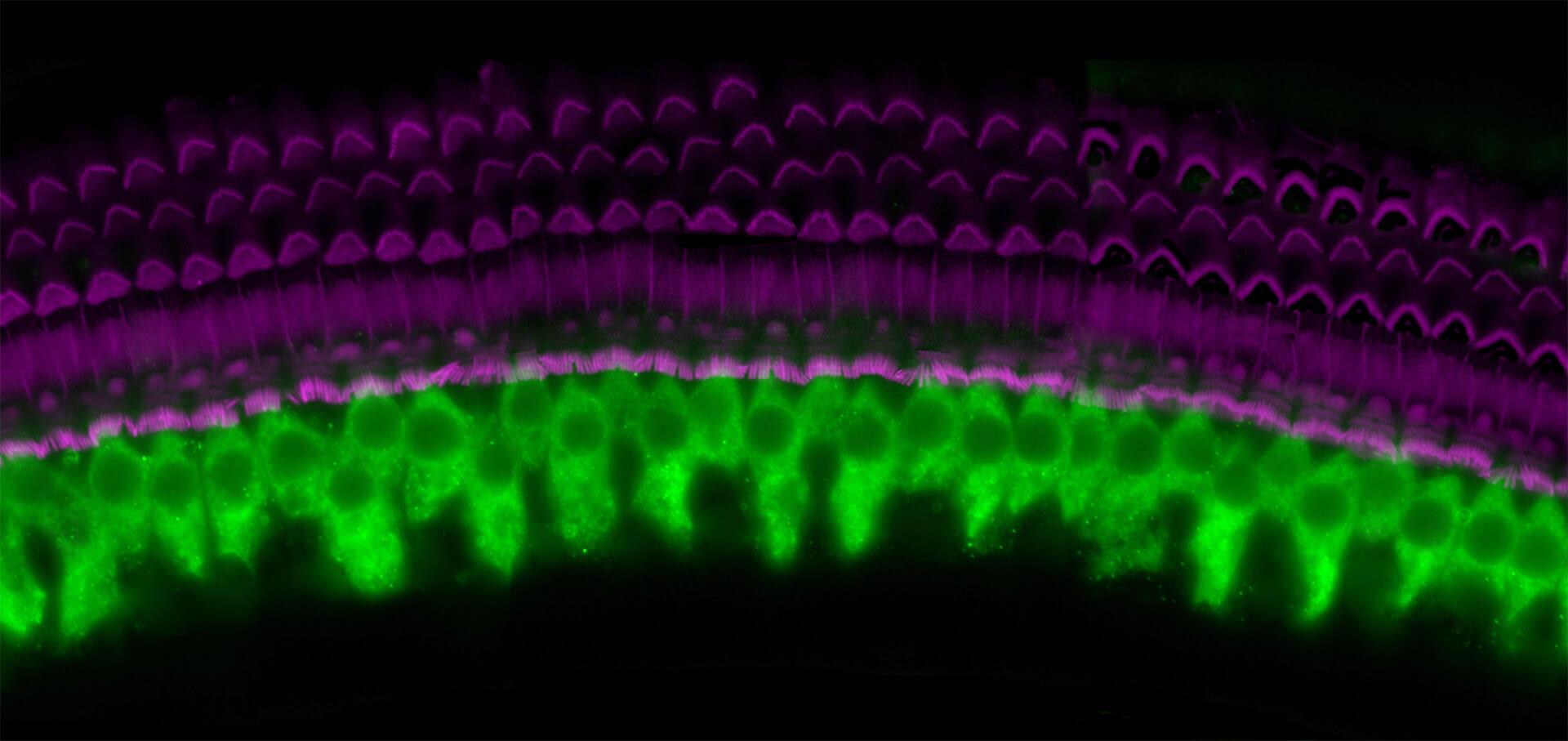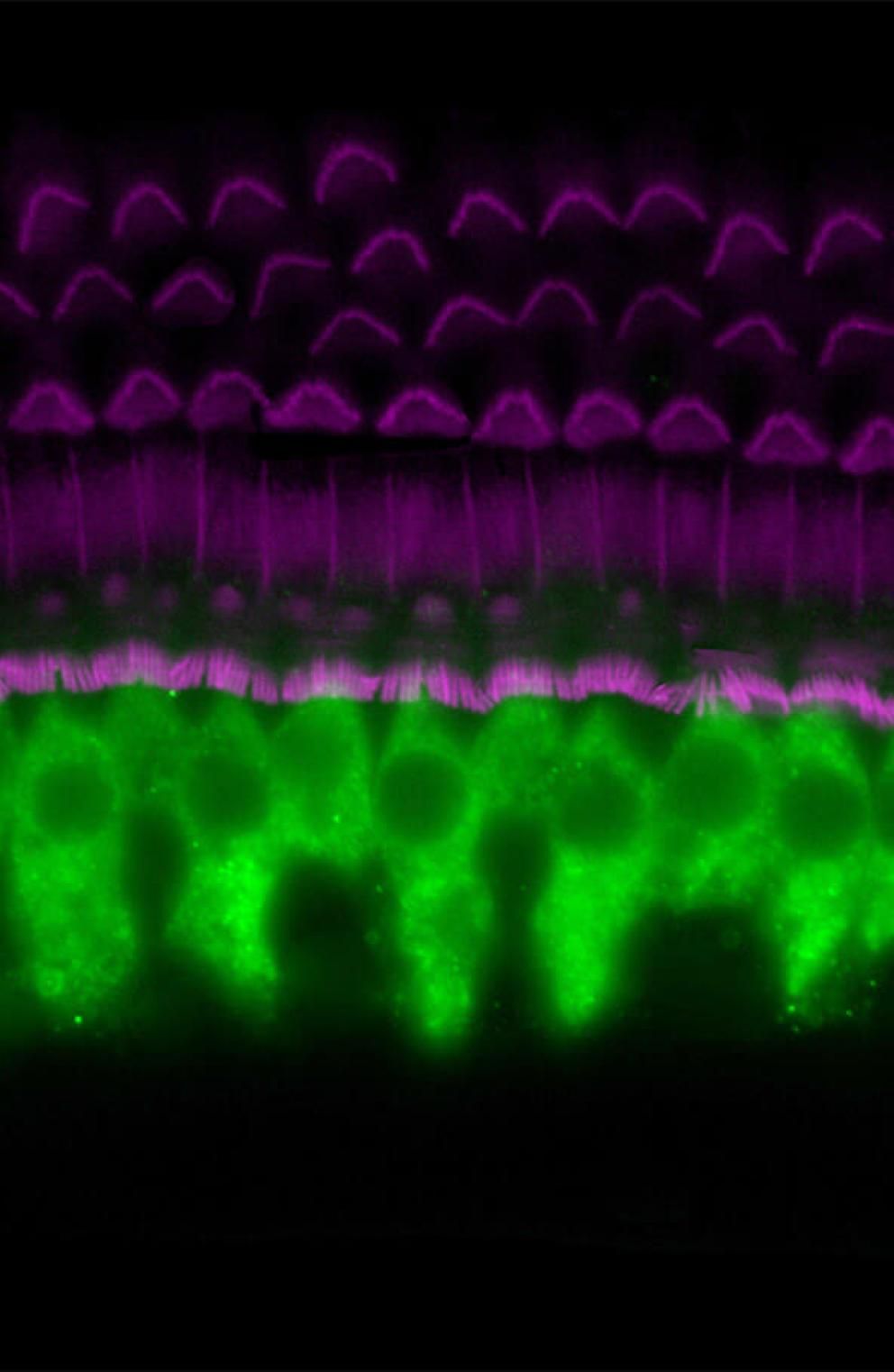Our experienced DDD core staff possess all the professional skills and knowledge base required to undertake essential drug discovery and delivery programs to drive them from target validation, through hit identification, hit-to-lead determination and lead optimization to develop a high-quality and well-characterized drug candidate (See Fig. 1).
Drug Discovery & Delivery Core (DDDC)
- Drug Design, Synthesis and Validation Laboratory
- Contact Chunkai Wang (ChunkaiWang@creighton.edu)
- ADMETox Laboratory
- Contact Alekha Dash (AlekhaDash@creighton.edu)
- Zebrafish Laboratory
- Contact Linda Goodman (LindaGoodman@creighton.edu)
- Cell Culture and Tissue Laboratory
- Contact Sarath Vijayakumar (SarathVijayakumar@creighton.edu)
Target Validation and Structure Optimization
- Hit Identification and/or Virtual Screening (transcriptomic screens and structural docking screens)
- Bulk and Single Cell RNA Sequencing and Bioinformatics Analysis
- Screening with Virtual Combinatorial Peptide Library
- Hit-to-Lead
- Lead Optimizations
- Fragment-based drug discovery
- Structure-based drug discovery
- Chemical Synthesis
- ADMETox Assessment including perilymph collection and analysis
- Drug dosage form design
- Zebrafish screens in vivo
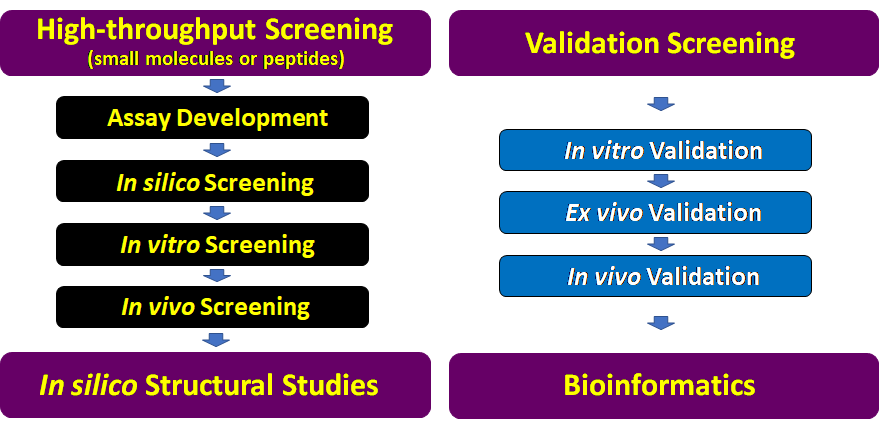
Fig. 2. Pipelines for screening and validation of small molecule or peptide hits in DDD CORE.
Our synthetic organic/medicinal chemists work closely with computational chemistry, bioscience and drug metabolism/pharmacokinetics (DMPK) teams to assemble a project-specific iterative drug discovery process that addresses key challenges at each stage of the project. Our close proximity and state of the art bioinformatics system allows a very rapid design-synthesize-test-analyze cycle to efficiently inform decision making.
The engine driving most small molecule discovery programs is the chemistry team.
Medicinal Chemistry
A journey towards a successful product launch initiates with high quality research integration within different disciplines. At DDDC, we have developed an international reputation at Creighton University in the field of medicinal chemistry with a strong track record of delivering clinical candidates. Our highly trained team of chemists are hand-picked from across the globe with the singular goal of bringing their experience to tackle most difficult synthetic challenges.
Our perfect mix of experience scientist includes research-staff with top notch expertise of progressing compounds from concept-to-lead-to-new chemical entity-to market; they provide appropriate support and guidance in the pursuit of our internal/external client’s goals, and continuous mentorship and training for the next generation of budding drug discovery scientist/research scholars. We value our clients and provide professional service with the aim that customers return to our medicinal chemistry facilities, again and again, to take advantage of our wide-ranging expertise and ability to conduct a hypothesis-driven approach with rapid data generation.
Our proficiency in library synthesis and scaffold design allows rapid access to many compounds for Structure Activity Relationships (SAR) evaluation.
Our easy access to database and analytical software allows our scientists to analyze data, identify trends and provide support for informed selection of the next synthetic targets.
Our experienced team provide early determination and assessment of critical ADMETox properties to guide lead discovery with goals of identifying well characterized drug candidates.
We have broad experiences in prodrug technology platforms, such as time- and pH-release driven strategies, while optimizing stability and solubility of the parent compound(s).
Synthetic Chemistry
Innovative and robust chemical synthesis is essential when seeking to generate novel patentable molecules with optimized biochemical profile.
When you have a dedicated team by your side capable of efficiently bringing your concepts and ideas to problem can make all the difference on handling synthetic challenges. Here at DDDC we are proud to have cultivated most dynamic synthetic chemistry group combining industry- and academia-based ideologies.
Our highly trained team of chemists are qualified to PhD level or higher. Each has been hand-picked from across the globe with the singular goal of bringing their experience to tackle most difficult synthetic challenges.
Peptide Chemistry
Solid phase peptide synthesis of polypeptides at 0.25 mmol scale using a microwave-assisted automated peptide synthesizer.
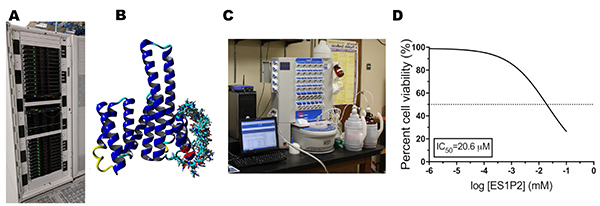
Fig. 3. Inhibition of protein-protein interaction resulted in cell death. Virtual combinatorial tetrapeptide library was docked, using our GPU-cluster (A), on the dimerization interface 14-3-3 protein (B). The best binder peptide was chemically synthesized using our microwave peptide synthesizer (C) and promoted the apoptosis of skin cancer (Lovas, unpublished results and patent application).
Computation Chemistry
When the experimental three-dimensional structure of a target protein is not available, the structure is determined by homology modeling and refined by subsequent molecular dynamics (MD) simulations to be appropriate for docking simulations.
Analytical Chemistry
We have maintained highly efficient and most accurate analytical services for providing full confidence in the structure and purity of our molecules.
High quality synthetic and medicinal chemistry requires high quality analytical chemistry support. Having confidence in the structural characterization of your compounds is vital and allows efficient progression of a lead series. At DDDC we have invested heavily in the latest analytical tools to facilitate this process.
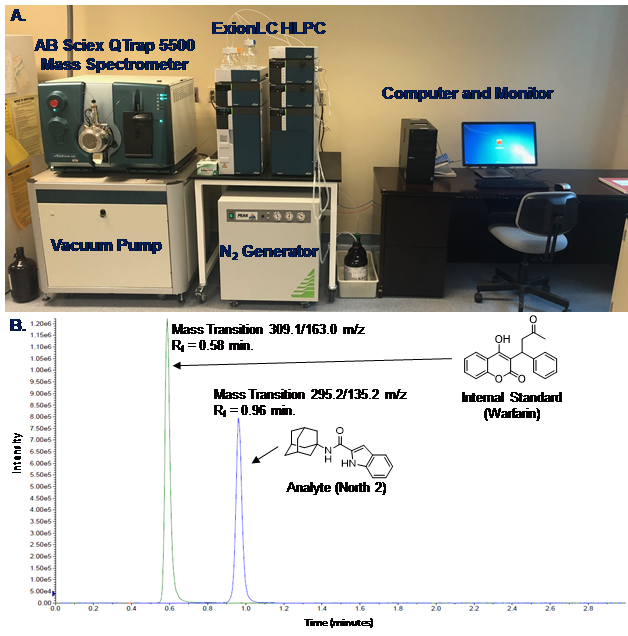
Fig. 4. A) AB Sciex QTrap 5500 mass spectrometer used for quantification experiments (ADME and PK/PD). B) Example chromatogram with resolved novel antitubercular (North 2) and internal standard (warfarin) monitored through specific mass transitions.
Consultancy services
DDDC offers series of DMPK consultancy services to drug discovery research teams within (but not limited to) the academic sector. We can work as a stand-alone function or as an integral part of the drug discovery project team based on the expertise requirements from the clients.
Services include:
- DMPK consultancy from Hit ID right through to Candidate Nomination.
- Strength in providing DMPK input into hearing discovery projects.
- Independent expert DMPK reviews of ongoing discovery projects.
- Expertise in integrating DMPK into early drug discovery.
- Problem-solving abilities around ADME and PK.
- Auditing of DMPK of third party (e.g CRO) reports.
- Review and unbiased critique of research proposals.
- Third party negotiations on DMPK packages for in-licensing opportunities.
- Physicochemical profiling
- IVIVE and human PK predictions
- In vitro ADME
- In vivo PK/PD
- Bioanalysis
- Metabolite identification
Biomedical-science
Our in-depth knowledge of target biology, therapeutic area specialism, and experience of working collaboratively at each stage of the drug discovery pipeline allows the efficient design and implementation of tailored high-quality assays, which help to accelerate your drug discovery programs.
- Bulk and single cell RNA sequencing using 10XGenomics platform and subsequent bioinformatics analysis
- Assay development
- Understanding the assay purpose
- Identifying different assay formats
- Developing or sourcing optimal assay reagents
- Monitoring assay performance
- Options for automation and scaling
- Optimization
- Quality control via statistical validation
- Screening
- Fig: typical hit identification hit screening cascade (refer grant)
- Cellular assays
- Biochemical assays
- Biophysical assays
Image  | Director: Patrick C. Swanson, PhD is a Professor and the Graduate Program Director in the Department of Medical Microbiology and Immunology in the School of Medicine at Creighton University. He is also currently the Director of the Creighton University Flow Cytometry Core Facility. His graduate work in the Department of Chemistry at the University of Michigan involved in analyzing anti-DNA antibody recognition of conformationally constrained DNA hairpin molecules. His current research is focused on understanding how RAG1 protein stability in regulated in developing B cells, and its role in supporting efficient immunoglobulin gene rearrangement and B cell development. In particular, he has an interest in developing and using small molecule inhibitors of receptor signaling pathways and protein degradation to elucidate mechanisms regulating RAG1 protein turnover. His research is supported by NIH and LB595 grants. |
Image  | Co-Director: Dr. Alekha Dash, PhD is a professor as well as Endowed Chair, Holder of Gilbert F. Taffe, Jr. Endowed Chair. Chair, Department of Pharmacy Sciences, Creighton University, Omaha, Nebraska. Associate Dean, Associate Dean for Research, School of Pharmacy and Health Professions, Creighton University, Omaha, Nebraska. |
Image  | Sub Core Director: Dr. Gopal Jadhav, MBA, PhD is an Assistant Professor (tenure-track) in the Department of Pharmacology and Neuroscience in School of Medicine at Creighton University. He is a medicinal chemist with experience in the pharmaceutical industry and academic research, He has been engaged in the full spectrum of drug discovery programs – from hit to lead libraries, hit-to-lead campaigns, all the way to successful lead optimization projects and candidate drug selection. |
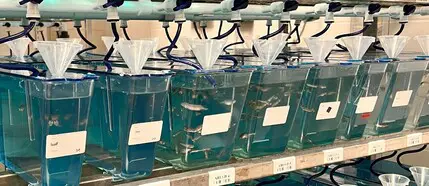
The Zebrafish services of the Drug Discovery and Delivery core provide support for behavioral, developmental, and neurobiological studies. Researchers have access to fish housing, breeding, and use of several instruments specific for using zebrafish as a model organism. We can support researchers and facility users through any of the following services. Additional project-specific support for users can be arranged as needed.
- Behavioral Analysis
- Drug Screening
- Genetic Manipulation
- Zebrafish Imaging
The Drug Discovery and Delivery Cell and Tissue Culture Core provides resources for investigators who need access to a cell culture facility or whose labs do not want to go through the hassle of setting up a dedicated culture room in their lab.
Equipment
Biosafety Cabinets: Four Labconco Axiom type C1, NUAIRE Laminar Flow
CO2 Incubators: Four PHCbi Cell-IQ series incubator in the cell culture room, Heracell VIOS 160i and Forma Steri-cycle incubators in the tissue culture room
Countess 3 FL Automated Cell counter with Brightfield, DAPI, GFP and RFP filters
Microscopes: Leica DMi1 inverted phase contrast microscope, Leica S9D stereo microscope
Centrifuges: Sorvall ST8R, Sorvall Legend X1R refrigerated centrifuges
Other equipment: Thermo Scientific Precision GP15D dry baths, microcentrifuges, refrigerator for media storage.
Researchers get access to all the resources in the facility at a nominal rate charged biannually.
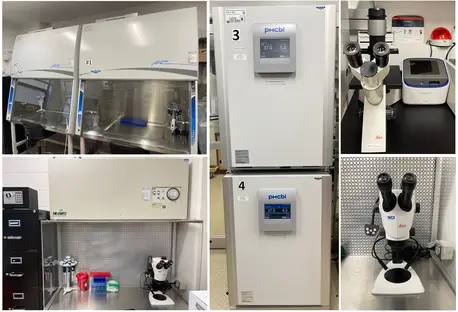
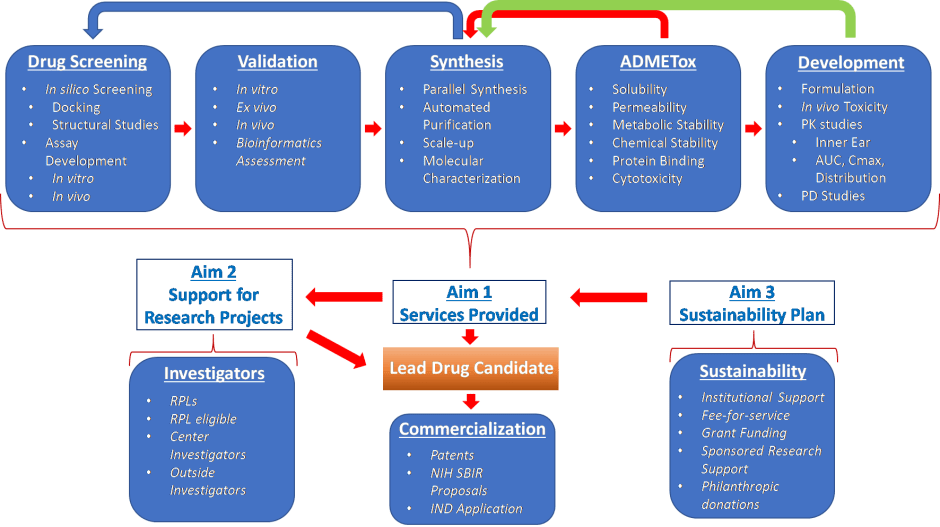
We offer screening approaches to identify hit compounds, including fragment-based screens, peptide-based drug screening, high-throughput screening and complementary in silico approaches.
We provide hit-to-lead services where high-throughput chemistry enables the rapid design and synthesis of libraries of novel compounds. Successive use of in silico techniques and medicinal chemistry, enables our team to produce high quality leads for further optimization.
We will develop in house solutions to deliver robust data for complex projects to fit your needs. Our solutions include a broad range of biophysical, biochemical, cellular and live cell imaging platforms as well as translational assays. We can integrate early ADMETox profiling, PK/PD correlations, to predict optimal human dose.











